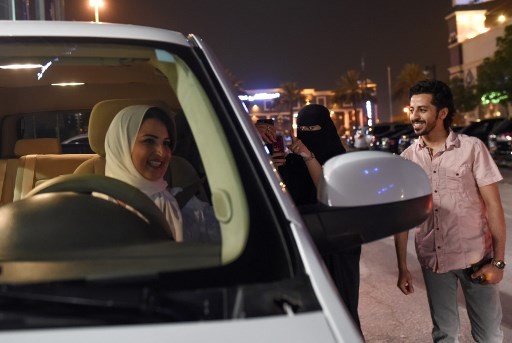Popular Reads
Top Results
Can't find what you're looking for?
View all search resultsPopular Reads
Top Results
Can't find what you're looking for?
View all search resultsSaudi women driving is seen better for economy than Aramco IPO
Allowing women to drive in Saudi Arabia could add US$90 billion to economic output by 2030.
Change text size
Gift Premium Articles
to Anyone
Allowing Saudi women to drive could help the kingdom reap as much income as selling shares in Saudi Aramco.
The move, which went into effect on Sunday, could add as much as US$90 billion to economic output by 2030, with the benefits extending beyond that date, according to Bloomberg Economics. Selling as much as 5 percent stake in Saudi Arabian Oil Co. -- at the most optimistic valuation -- could generate about $100 billion.
Saudi Arabia ended its status as the last country on earth to prohibit women from taking to the wheel. A handful of women drove through the still-packed streets of the capital early Sunday while others drove in convoys around Riyadh neighborhoods in celebration of the ban’s end. The decision would enable women to work without having to incur the cost of a driver or taxis.
“Lifting the ban on driving is likely to increase the number of women seeking jobs, boosting the size of the workforce and lifting overall incomes and output,” according to Ziad Daoud, Dubai-based chief Middle East economist for Bloomberg Economics.
“But it’ll take time before these gains are realized as the economy adapts to absorbing growing number of women seeking work.”
Ending the ban is one of the most socially-consequential reforms implemented by Saudi Arabia’s Crown Prince Mohammed bin Salman. It’s also a key part of his plan to veer the economy from its reliance on oil.
Ziad Daoud, Bloomberg Economics, said: “The participation of women in Saudi Arabia’s labor market is poor. With only 20 percent of females in Saudi Arabia economically active, the country even lags behind its neighbors in the Gulf, where participation averaged 42 percent in 2016. Recognizing this, the Saudi administration made raising the female participation rate one of its main targets in the National Vision 2030 program, designed to modernize Saudi society.”
Adding 1 percentage point to the Saudi participation rate every year might add about 70,000 more women a year to the labor market, according to Daoud. The larger participation of women will lift potential economic growth by as much as 0.9 percentage points a year, “depending on the proportion that chooses to work full or part-time,” he said.










